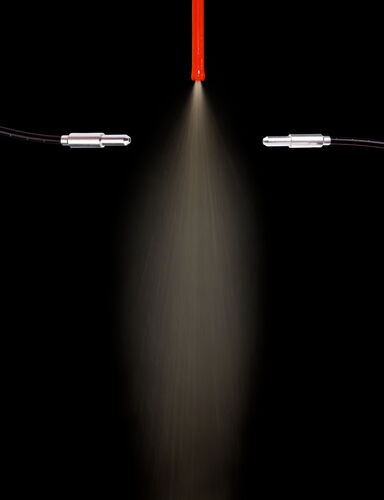Just a matter of setting
Color sensors from ipf electronic as self-learning contrast sensors
Color sensors from ipf electronic can also be used as self-learning contrast sensors and are ideally suited for the control of spraying processes due to effective contamination compensation, as a concrete example shows. The color sensors of the OF50, OF51 and OF65 series are proven optical solutions that are an integral part of ipf electronic's product portfolio. With the help of the free software for the devices, users have a wide range of potentials for parameterization and evaluation with a wealth of functions for individual settings of the sensors. Various optics are available for this purpose. Various fiber optic systems (plastic and glass fiber) with a large selection of front optics offer even more design freedom.
Influence of the light intensity on the evaluation
Depending on the requirements, it is sometimes very important to compensate for intensity fluctuations of the light reflected by an object, e.g. caused by positioning inaccuracies, or to evaluate the intensity "on an equal footing" with the actual color detection in the case of very precise queries. For this purpose, the parameterization software provides various calculation modes for evaluating the color space.
Color sensors as contrast sensors
This opens up the possibility of using the color sensors as high-precision contrast sensors. In this way, diffuse-reflection sensors can be used, for example, to monitor processing conditions on metallic surfaces or the light/dark gradients of objects with minimal color deviation. Typical applications also include the detection of transparent liquids in glass containers and transparent hoses, or the control of spraying processes with a through-eam sensor system.
Effective contamination compensation
However, in spray processes in particular, deposits can occur on the optics of the fiber optics due to the spray mist. The sensors solve this problem with a very effective contamination compensation. For this purpose, a short teach command is given by a higher-level PLC after the spraying process has ended, in order to relearn the signal or the state in the now free beam path between the transmitter and receiver. The light output or light intensity is also readjusted within the specified limits. This new parameterization is stored in the RAM of the sensor and used for the next spraying process. The sensor thus becomes a self-learning system, so to speak, without changing the parameterization originally stored in the device.


